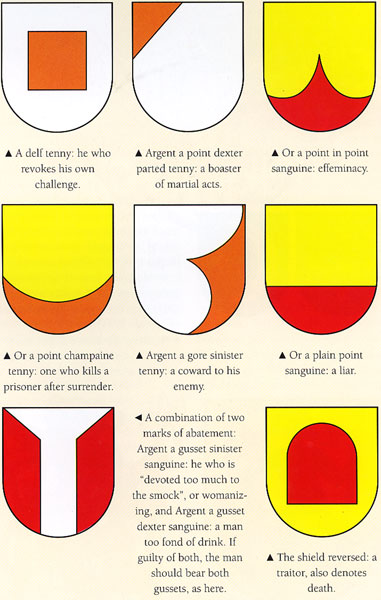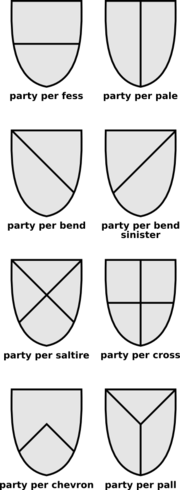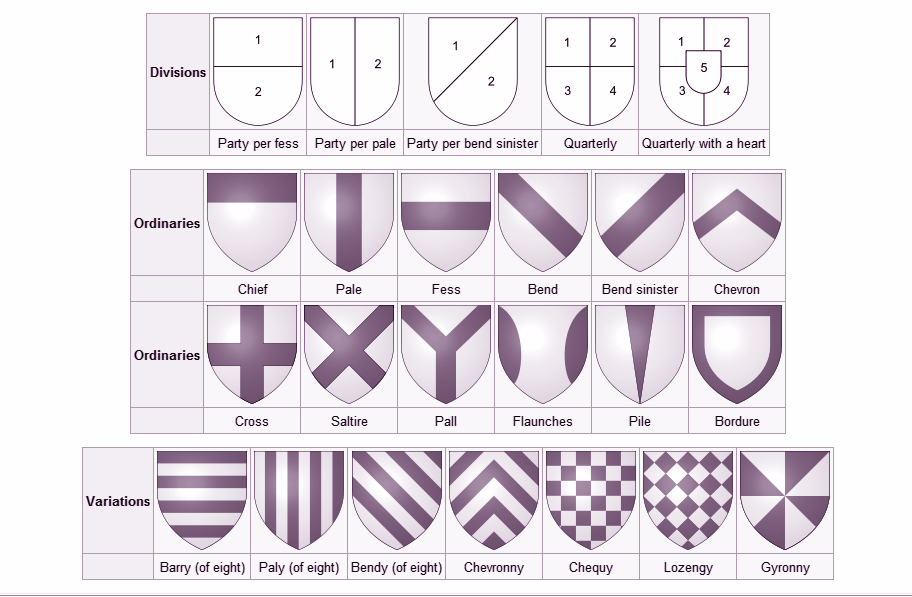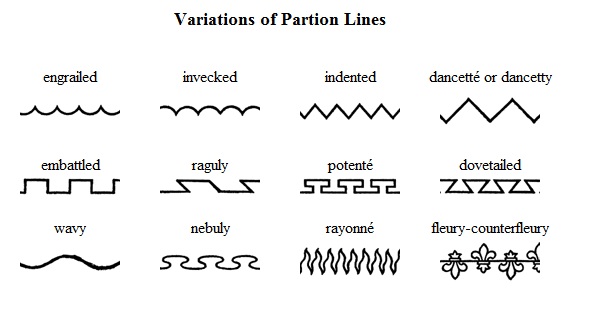Divisions of the Field
Divisions of the field is a heraldic term referring to the pattern on a shield. The field of a shield in heraldry can be divided into more than one tincture (as can the various charges). The divisions are (almost without exception) named according to the ordinary that shares their shape. (It should be noticed that French heraldry takes a different approach in many cases than the one described here.)
Common partitions of the field are:
- parted (or party) per fess (parted horizontally),
- party per pale (parted vertically),
- party per bend (diagonally from upper left to lower right),
- party per bend sinister (diagonally from upper right to lower left)
- party per saltire (diagonally both ways).
- party per cross or quarterly (divided into four quarters)
- party per chevron (after the manner of a chevron)
- party per pall (diagonal divisions from upper left and upper right meeting vertical division)
A field cannot be divided per bordure (as if this did exist it would be indistinguishable from the bordure); though a bordure can. Neither can a field (nor any charge) be divided per chief, for similar reasons.
A shield vertically divided into blue (left side) and gold (right side) would be blazoned: Per pale azure and Or.
When a field is quartered in a swastika-like pattern, this is called quarterly en equerre. Use of a swastika-like form in heraldry is called the fylfot and long predates any fascist associations.
German heraldry, unlike British, acknowledges the form per bend... broken in the form of a linden leaf.
There can also be party per chevron reversed, which is like party per chevron except upside down. Party per chevron reversed throughout (with the point reaching to the very bottom of the shield) is sometimes referred to as chaussee.
Although it is alleged that per chevron enhanced (with the division occurring higher than it normally would) is called manteld in English, the least that can be said about this is that is a term of far from frequent application.

Shields may also be divided into three parts: this is called tierced[, as in tierced per pale, azure, argent and gules (though in British heraldry this is not done and the foregoing shield would be blazoned [as the pale is supposed to be one-third of the width of the field and is always so depicted under these circumstances] per pale azure and gules, a pale argent.) A particular type of tiercing, resembling a Y in shape (division lines per bend and bend sinister coming down from the chief, meeting at the fess point, and continuing down per pale), is called per pall.
Shields may also be divided into three parts by a combination of two methods of division, such as party per fess, in chief per pale.
There are also less common divisions which are termed "variations". These divisions are more complex and are not as commonly used. Some later designs were adopted in the 11th-12th century when the need for more variations in heraldric devices were needed.
Variations of Division
Not all divisions need to be lines. They can be dovetailed, danccetty, or embattled.


